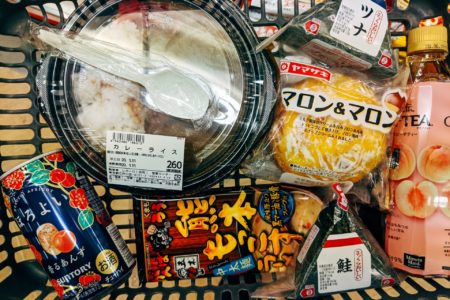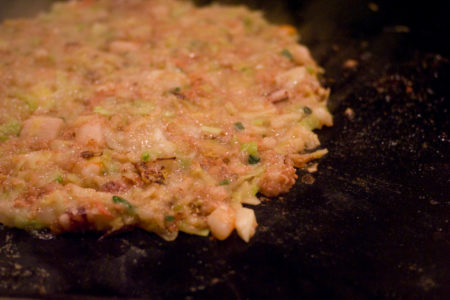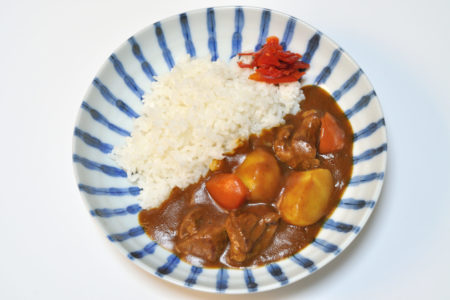Stay Warm with these Hot Pot Dishes!

Top Image: Protein photo created by jcomp – www.freepik.com
During this time of year, you’re braving the daily transit to work and back. It’s easy to want to dive under the kotatsu or crank up the heat and escape the cold. But what do you throw together for an easy, comforting meal to help warm you up? The answer to that is a hot pot-style dish, or typically called nabe (鍋) in Japanese.
Whether you are alone or have friends over, you just need a portable IH or gas stove and some simple ingredients to help warm you up from the inside out. Here we will be looking at the different types of nabe dishes that are frequently cooked in Japan.
Yose Nabe
Yose Nabe is your typical hot pot dish that can include meat, seafood, vegetables, tofu and mushrooms, cooked together in a soup stock, or dashi. What you put into it is literally up to you and you’ll find that popular ingredients vary depending on which part of Japan you’re in.
Some people like to finish this off with throwing some rice into the flavored, left over stock and make zosui, which turns the rice into a porridge-like consistency. It too makes for some good comfort food.
Chanko Nabe
Chanko nabe is also called “sumo stew,” as it is heavy on proteins, such as chicken, tofu, fish and beef. This nabe is prepared in a richer soup stock than other variations. Like Yose Nabe, there really is no set recipe for this dish, so you can experiment whatever you like.
The reason it is nicknamed “sumo stew,” is because it has traditionally been used by sumo wrestlers to bulk up. For them, a meal can consist of up to 20,000 calories, hence the nickname. If your New Year’s resolution was to lose weight, then it would be wise to steer clear of this traditional dish.
Sukiyaki
This dish is made up of thinly sliced beef, a variety of vegetables, tofu, and noodles. Together, they are cooked in a soy sauce- based stock with sugar that makes it a little sweet.
The difference maker with sukiyaki is that whatever ingredients are cooked are then typically dipped in a raw beaten egg before being eaten. I was hesitant to try this dish out when I first came to Japan, because where I am from, it is a big no-no to use raw egg for any recipe. Once you get past that hurdle, it is a fun dish to enjoy with family and friends, or even alone (many beef bowl chains will have their version of a 1-person sukiyaki set every winter).
Shabu Shabu
This dish uses thinly sliced pork or beef and vegetables (beginning to see a pattern here?). The soup stock is typically made from kombu seaweed and water. It’s very light and allows the flavor of the ingredients to stand out rather than the soup overpowering them.
One would normally use a preference of dipping sauce for the meat, such as ponzu, which is a light citrus flavored sauce, and/or goma-dare, which is a creamy sesame sauce.
The name “Shabu Shabu” comes from the Japanese onomatopoeia for the swishing sound it makes while cooking in the pot. This is also more of a communal type dish that can be a party favorite.
Oden
This hearty dish is made up of daikon radish, eggs, konjac, a variety of fish cakes and potatoes which are cooked for hours in a light soup stock and soy sauce. It can also be eaten with karashi, which is a Japanese mustard. Again, the ingredients for this dish can vary depending on which region of Japan you are located.
This can be found in almost all convenience stores in winter, so if you are not feeling up to cooking something after a day’s work, you can just pop over to the nearest convenience store and get a cup or bowl of this popular dish.
These are just a handful of the types of hot pot dishes you can find or make in Japan. There are a lot more varieties to be had around the country, and you can experiment with any of them to your liking. They normally take little prep time and can be enjoyed with family or friends. They’re also a great thing to eat before drinking sake, since the heaviness of the food will offset the alcohol!
So if you’re looking for a good comforting meal to warm up with during these winter months, give these dishes a try.
Photo Credits:
Top Image: Protein photo created by jcomp – www.freepik.com
All other content (text) created by the original author and © 2022 MUSUBI by Borderlink
RELATED
-

Making Sense of Food Labels in Japan
Top Photo by Markus Winkler on Unsplash Undoubtedly, one of the most daunting tasks facing newcomers to Japan… -

Monjayaki: An Intellectual & Fun Food
Top Photo: “Monjayaki” by Masaaki Komori from Tokyo, JAPAN licensed under the Creative Commons Att… -

Delicious Curry on the Cheap
Top Photo: Ocdp used under the Creative Commons CC0 1.0 Universal Public Domain Dedication. Wikimedia Commons …
PEOPLE

Antonio Diaz
From the US
Has experienced Japan- and especially Osaka- for many years!


